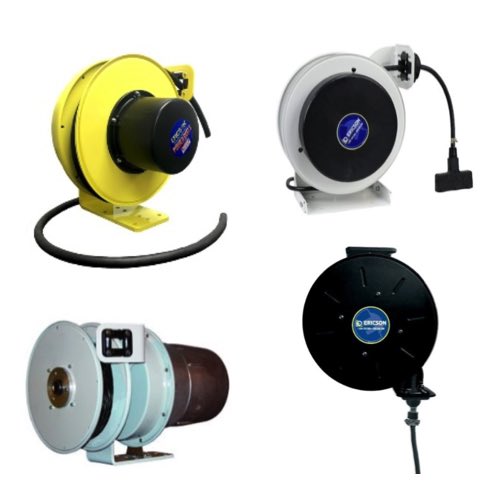Cable Reels

RSP Supply carries a full line of cable reels engineered for efficient storage, movement, and dispensing of cables across industrial, commercial, and entertainment applications. Cable reels make handling long runs of power, communication, and control cables easier, safer, and more efficient by keeping cables organized and tangle-free. Cable reels are available in both manual and motorized designs to match the needs of any application. Manual reels offer straightforward operation and compact portability, while motorized versions provide automated winding and unwinding for faster, more controlled cable management in high-volume environments.
Built from rugged materials such as steel, aluminum, or impact-resistant plastic, these reels are designed to perform reliably in harsh environments - including exposure to chemicals, temperature extremes, and heavy industrial use. A wide range of reel sizes and configurations are available to handle cable lengths from a few meters to several hundred feet, making them suitable for construction sites, manufacturing plants, and broadcast or telecom installations.
FAQs
Q: What are cable reels used for?
Cable reels are used to store, transport, and dispense electrical, communication, or data cables efficiently, preventing tangles and ensuring quick cable deployment and retrieval.
Q: What materials are cable reels made from?
Cable reels are commonly constructed from steel, aluminum, or reinforced plastic for maximum strength, corrosion resistance, and longevity in demanding environments.
Q: What features make a cable reel easy to use?
Cable reels often include locking mechanisms, manual or motorized winding, adjustable tension control, and cable guide arms to ensure organized storage and smooth operation.
Q: What cable diameters can most cable reels hold?
Most cable reels accommodate cables with diameters ranging from approximately 1/4 inch to 1 inch, depending on the model and application.
Q: Can cable reels be used for both power and data cables?
Yes, cable reels can manage both power and data cables, provided the reel’s design matches the cable type, voltage rating, and required length.
Why Buy Cable Reels from RSP Supply
RSP Supply offers a complete selection of cable reels built for industrial reliability and long-term performance. Our selection of reels provide easy access, organization, and cable protection in any environment. With expert support, RSP Supply is your trusted source for quality cable management solutions.

